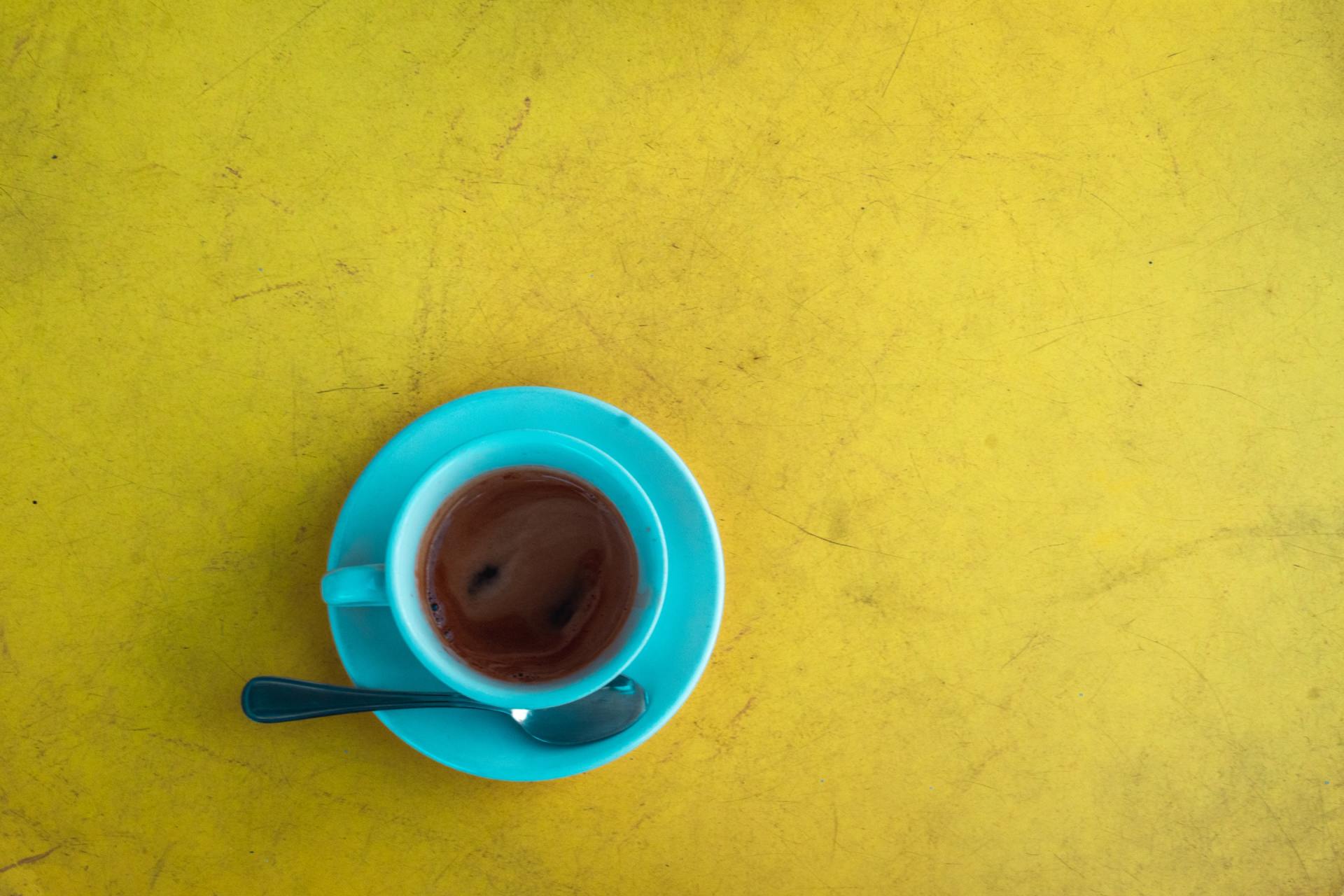What’s the Story with Instant Coffee?
Instant coffee can be found just about anywhere these days. It's super-convenient and is enjoyed by those looking for a quick boost of caffeine. But, do you actually know what Instant Coffee is? Let’s take a closer look...
What Is It?
First, the obvious: Instant Coffee is in fact made from real coffee. Whole beans are roasted, ground and brewed before they start their journey to becoming instant coffee. What makes coffee instant is when all the water is removed from the brewed product, leaving behind dehydrated crystals of coffee. To make it coffee again, you just add water! It’s that simple!
You may also hear instant coffee referred to as:
• Coffee powder. It does look like a powder, after all.
• Soluble coffee because it dissolves in water.
• Crystal coffee. The dried, powder-like substance is crystallized.
Typically, instant coffee is made with Robusta coffee beans rather than the more expensive Arabica Beans (such as Quokka Coffee naturally!)
How It's Made?
There are two methods for producing instant coffee crystals: freeze-drying and spray-drying.
Prior to drying, the brewed coffee may—or may not—be concentrated with one of these methods:
• Vacuum evaporation: A process in which the coffee can boil at a lower temperature. It's also used to make ketchup, powdered milk, and other commercial foods.
• Freeze concentration: A more flavour-friendly process in which water-based ice is removed, leaving a more concentrated liquid behind. It's also used to make concentrated fruit juices and concentrated vinegars.
Freeze-Drying Method
The freeze-drying method preserves the most 'coffee flavour,' but is a much more involved procedure. It's likely that you will pay more for freeze-dried instant coffee, but the flavour difference is well worth it. (Quokka is Freeze Dried)
1. The coffee or a coffee concentrate (made by freeze concentration) is rapidly frozen to around -40 Celsius.
2. It's placed into a drying chamber, a vacuum is created in the chamber and then the chamber is heated.
3. As the frozen coffee warms up, the frozen water rapidly expands into gas in a process called sublimation. What's left is dry grains of coffee.
Spray-Drying Method
The spray-drying method of making instant coffee is almost as instantaneous as actually brewing the coffee. The transition from liquid coffee to instant coffee takes only 5 to 30 seconds.
1. In this method, coffee or concentrated coffee is sprayed from a high tower in a large hot-air chamber.
2. As the droplets fall, the remaining water evaporates.
3. Dry crystals of coffee fall to the bottom of the chamber.
During this process, the high temperatures tend to affect the oils of the coffee and more of the flavour is unfortunately lost. Also, it often produces too fine of a powder. To make the powder acceptable for consumers, the grains are fused together with additional processing that involves steam.
History
The first “instant coffee” is made in Britain in 1771. It was called a “coffee compound” and had a patent granted by the British government.
The first American instant coffee was created in 1851. It was used during the Civil War and experimental “cakes” of instant coffee were shared in rations to soldiers.
David Strang of Invercargill, New Zealand invented and patented instant or soluble coffee in 1890. For its manufacturing it used something called "Dry Hot-Air" process.
However, it wasn't until the Pan-American Exposition of 1901 that instant coffee received widespread attention. There, it was introduced to the masses by Satori Kato, a Japanese scientist who was working in Chicago.
Later, in 1910, English chemist George Constant Louis Washington developed another process for making instant coffee while living in Guatemala. An avid coffee-drinker, he noticed a powdery build up on the spout of his favourite silver coffee pot. That prompted his curiosity and further experimentation followed. He eventually produced a dried coffee crystal much like we still have today. His brand was called Red E Coffee.
At the urging of the Brazilian government, Nestle began refining the instant coffee process in 1930. In 1938, the Switzerland-based company introduced its own instant coffee to the international market.
Did You Know?
Instant coffee is not just a drink. It's also a major ingredient in Caffenol-C, a homemade developing liquid for black-and-white photos. Interestingly, the cheaper the brand of instant coffee, the better it usually works for developing photos. (Your Quokka Coffee won’t work for this purpose then!!)
Any health benefits?
Many can’t imagine their day without a cup of coffee. With that much of consumed coffee, it would be interesting to know what influence coffee has on human organism. In this text we will focus on benefits.
Experts that conducted studies say that coffee reduces the risk of Alzheimer's disease, dementia and Parkinson's disease. Coffee has antioxidants that may prevent some damage to brain cells and boost neurotransmitters which amplify cognitive functions. It also reduces chance of glioma, which is a form of brain cancer. There are also researchers that think that coffee and some of its ingredients can activate a DNA-repairing protein in cells which can possibly prevent damage to DNA that can turn cells into cancer.
There are studies that say that frequent coffee consumption lowers risk of developing diabetes mellitus type 2. Antioxidants in coffee, mainly chlorogenic acid and quinides boost cells’ sensitivity to insulin, which in turn regulates blood sugar. Decaffeinated coffee is even better in this because some studies have found that caffeine blunts the insulin-sensitivity boost of antioxidants in coffee.
Moderate coffee drinking also has heart benefits and coffee drinkers have lower chances to suffer a heart stroke than non-coffee-drinkers. Again, antioxidants that coffee has may help suppress inflammation’s damaging effects on arteries.
There are also indications that the more coffee people drink, the lower are their chances to suffer cirrhosis and other liver diseases but there is still not enough information for us to be certain.
Coffee lowers risk of prostate cancer by some 20% and risk of endometrial cancer by 25%. Total and all-cause mortality is one more thing coffee decreases risk of. In some studies men who drank 2 to 3 cups a day had a 10% lower risk of mortality, while those who had 4 to 5 cups per day had a lower risk by 12%. In the same studies, these percent for women were even higher.
Although it was believed that coffee increases blood pressure it is found that it isn’t so and that it lowers blood pressure over the long-term. Coffee also improves the health of the blood vessels. It increases nitric oxide production in the endothelium which results in improved vascular muscle tone. Antioxidants in coffee can improve total cholesterol and raise “good” HDL cholesterol.
Coffee can also help to people that have slower metabolism and trouble with fat. It can improve fat burning by increasing metabolic rate, so the organism burns more calories. Taking coffee before workout can improve power and strength performance. There are studies that say that caffeine can speed recovery and reduce post-workout muscle soreness by up to 48%.
Caffeine also acts as an acute antidepressant. In 2004 a review is published that showed a negative correlation between suicide rates and drinking of coffee. One of explanations for this effect of coffee is that caffeine in blocking the inhibitory effects of adenosine on dopamine nerves in the brain reduced feelings of depression.
If you are interested in getting your office some quality instant Quokka Coffee - Check out our site today to browse our pre-set and customisable business packages that’ll give your office the beanie boost it needs to keep on thriving!
Want to read more from a top barista, then head to Olive Magazine and hear Celeste Wongs take on the 'Best instant coffee to buy', spoiler alert... Quokka Coffee is rated number 1!






